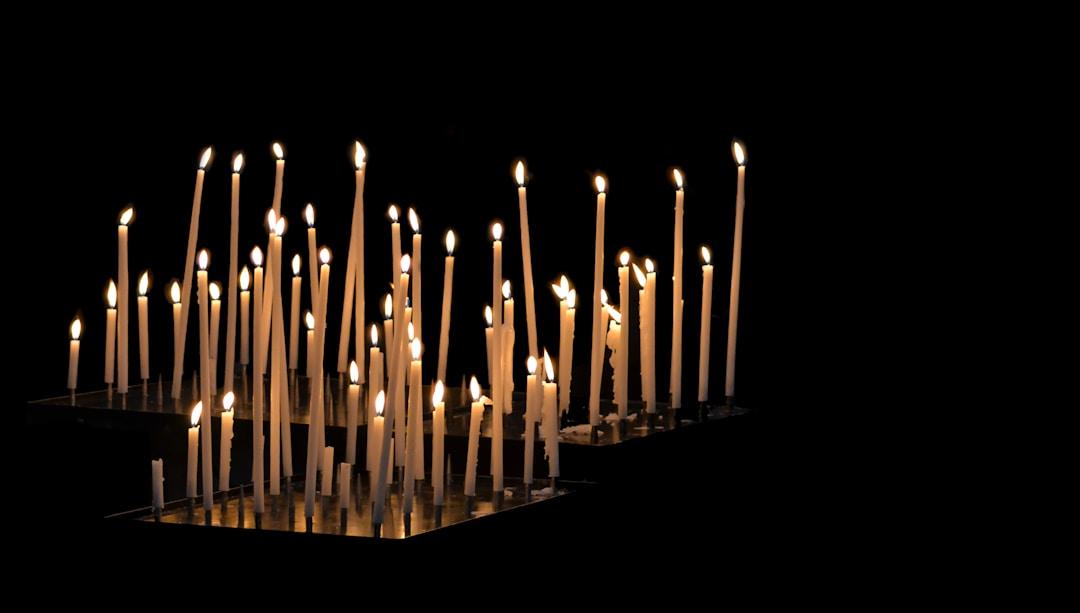The world of trading is full of charts, graphs, and indicators that guide investors in their decision-making process. Among these tools, the Candlestick Chart stands out due to its visual appeal and the detailed information it provides about price movements. For those new to investing, the fancy names and complex appearances of such charts might seem daunting. Fear not, for we are here to demystify what is a Candlestick Chart and guide you on how to read one.
Pivotal Elements of a Candlestick Chart You Must Understand
Alt Text: A bunch of lit candlesticks in a shadowy room.
As mentioned earlier, a single candlestick is formed by the open, high, low, and close prices throughout a particular period (which can vary from minutes to weeks). These four elements are represented in a candlestick’s body and wicks.
The body, also known as the real body, represents the range between opening and closing prices. Meanwhile, the lines protruding from the body, called shadows or wicks, depict the highest and lowest prices during that period.
The color or delineation of the body provides additional information. A filled or dark body means the closing price is lower than the opening price, indicating a bearish motion. On the other hand, an empty or light body signals a higher closing price, suggesting bullish movement.
Understanding these elements is instrumental in getting the most information from a candlestick chart. They are not mere lines and shapes but an encapsulation of market sentiment and potential price reversals.
Diving Deeper Into the Structure of a Typical Candlestick
Let’s move beyond the basic structure of a candlestick and comprehend how its various forms provide unique insights into market behavior. For instance, long bodies indicate strong buying or selling activity, whereas short bodies suggest little price movement and consolidated trading.
Long upper wicks hint at the presence of selling pressure, signifying that buyers drove the prices up, but sellers subsequently pushed them lower. Similarly, long lower wicks suggest buying pressure, indicating that sellers dropped the prices, but buyers lifted them again.
Certain special candlestick forms have unique names like ” Dogi ” “Hammer,” or “Hanging Man,” all of which represent specific market actions and sentiments. This language of candlestick charting is widely recognized within trading communities, making it crucial for you to understand.
Remember, though candlestick charts provide valuable insights, no single form should be used in isolation. Market conditions and other technical analysis tools should be taken into account for accurate interpretations.
Comprehending Patterns: Bullish vs Bearish Candlesticks
Alt Text: A candlestick chart displayed on an iPad.
Once you grasp the basic elements and the structure of candlestick charts, the next step involves recognizing patterns that, beyond individual candlestick forms, signify probable future trends. Broadly, these patterns are classified into bullish and bearish.
Bullish patterns signal the potential for the price to rise. Examples include the Morning Star, Hammer, or Bullish Engulfing pattern. On the other hand, Bearish patterns, such as the Evening Star, Hanging Man, or Bearish Engulfing, suggest a possible price drop.
It is important to note that patterns should not be analyzed in isolation. They provide invaluable clues about potential price swings, but seasoned traders always corroborate them with other technical indicators or signals for making holistic investment decisions.
Recognizing these patterns helps decipher market psychology and sentiment, assisting traders in predicting future price activity based on past tendencies.
Overall, reading a candlestick chart is an art that takes practice and patience to master but is well worth the effort due to the wealth of information it provides. Happy Trading!





